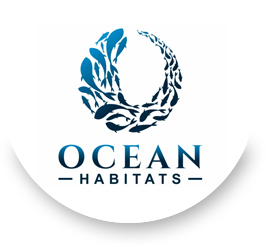MIA Students to Monitor Artificial Habitats

The artificial habitat pilot project designed to restore the cleanliness, health and aquatic diversity of the island’s canals will be aided by students from Marco Island Academy’s environmental science classes.
As part of their classwork, the students will monitor the 25 habitats that were purchased earlier this year from Ocean Habitats, Inc., a small Fort Myers-based company that designs and manufactures the devices. The habitats were installed in 120 days ago underneath the docks of homes that abut a canal that runs between Elm and Perrine courts.
The pilot project’s $10,000 cost includes installation, as well as monitoring to determine how the habitats are performing.
The simply constructed devices are designed to mimic mangrove roots in creating a home for organisms, such as larval and juvenile fish, crabs, shrimp and lobster, which consume the phytoplankton – microscopic marine plants – that can discolor water. Cleaner water can also allow for the growth of the sea grasses that provide important aquatic habitat.
The habitats are intended to aid the aquatic life cycle that was impeded by development, pollution and the installation of concrete seawalls and docks.
“This is the type of project that we’ve been looking for,” said Jerry Miller, MIA’s environmental science teacher, at the recent city Waterways Advisory Committee meeting where the school’s involvement in the project was announced. “We’ve wanted to get our students involved in the community and in doing hands-on science.”
Students will also test the canal’s water, probably on a bi-weekly basis, for such things as temperature, salinity, dissolved oxygen, organism identification and other basic parameters. Miller said they will also assemble the habitats, which are constructed from fiberglass, PVC pipe, polypropylene rope and crab-trap floats.
The lightweight devices come in two sizes, standard and the smaller “sampler,” that are installed under docks. According to David Wolff, Ocean Habitats’ president and executive director, each habitat is able to support 60 different marine species and when fully developed over 18 months, they can clean 35,000 gallons of seawater every day.
“I’m looking forward to trying to help some of these kids become marine biologists who’ll solve the problems the world’s oceans are currently facing,” explained Wolff, who also said it will take three to four years for the habitats to fully develop.
Miller said his students are excited about their involvement.
“The kids are really looking forward to it,” he said. “They like the idea of getting out of the classroom and into the community and spending some time on the water. They’re also looking forward to helping better their community.”
The project will also be incorporated into the MIA/Jean-Michel Cousteau’s Ambassadors of the Environment Summer Camp. The camp features hands-on learning that includes collaboration with local organizations.
MIA Principal Melissa Scott said she believes many of the school’s donors will be interested in the habitats.
“We’re going to spread the word among our donors and hopefully be able to spread the habitats all over the island,” she said. “It’s wonderful that we can connect students with community members and create a partnership and really spread the word across the whole island.”
Aside from the pilot project, habitats have been purchased by six residents for the canals behind their homes, including Jim Timmerman, chairman of the Waterways Advisory Committee. He installed a habitat behind his Perrine Court home in July of 2015 and he has described the results as being “absolutely phenomenal.”
Timmerman has said the catfish and sheepshead that were normally found in the canal are now being joined by young red snappers, snook, and other fish and crustaceans not found there for many years.
It was Timmerman who first brought the habitats to the city’s attention. He tested the products at his home for about 18 months before introducing them to the committee. After investigating the device, the committee voted to recommend the pilot project be approved by city council.
At the meeting, he discussed presentations he recently made to Miller’s environmental science classes.
“Just based on the number of questions from the kids, they are very enthused,” Timmerman said of the students. “That was one of my big goals in trying to push this forward and to see that enthusiasm from the kids, that means a lot.”
Wolff presented the Waterways Committee with a progress report for the pilot project at its recent meeting, while also lauding the cooperative relationship with MIA.
“I’m very pleased with what I see growing on them after 120 days in the water,” he said. “I’d say it’s pretty much a best case scenario in terms of the amount of life that has attached to them. This is the slow of year for this process. Just like the tourist season, we’re getting ready to go into season in the fall and winter and we should be accelerating the rate of growth of what’s living on the habitats.”


